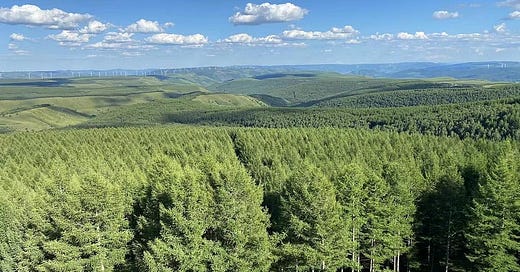Planting trees is good for the planet.
But what happens after planting a lot of trees?
Here in China, people start to have revelations that managing forests is so much more than just putting saplings in the ground and hoping for the best. It’s a science—and an art—that goes way beyond what most people realize.
China has spent the past five decades greening its land, with massive efforts like the Three-North Shelterbelt Project.
A previous episode on this project:
But how has forest management evolved over the years?
Recently, I’ve been hearing more and more experts and policymakers talk about forests playing the role of “four treasures” (森林“四库” in Chinese. I couldn’t find any official translation of this concept so this translation might be questionable. Comment with better version!).
See: Xi Focus: Planting trees to fortify China's "green assets"
What exactly does this term mean?
And how does it connect to our broader goals for climate action, environmental protection, and biodiversity?
In this episode, I sit down with Lei Xiangdong.
He’s the deputy director of the Institute of Forest Resource Information Techniques at the Chinese Academy of Forestry—one of China’s oldest and most respected forestry research institutes.
Shownotes:
What effective forest management entails today;
How has China's approach to forest management evolved over time;
Exploring the concept of forests as the "four treasures";
Forests as carbon sinks: potentials and challenges;
China’s focus on natural forests protection.
From carbon and clean water to food and income, forests do far more than we usually give them credit for.
And in China, there’s a clear shift happening—from focusing on how many trees are planted to how well forests are managed, in ways that support biodiversity, help tackle climate change, and support local livelihoods.













Share this post